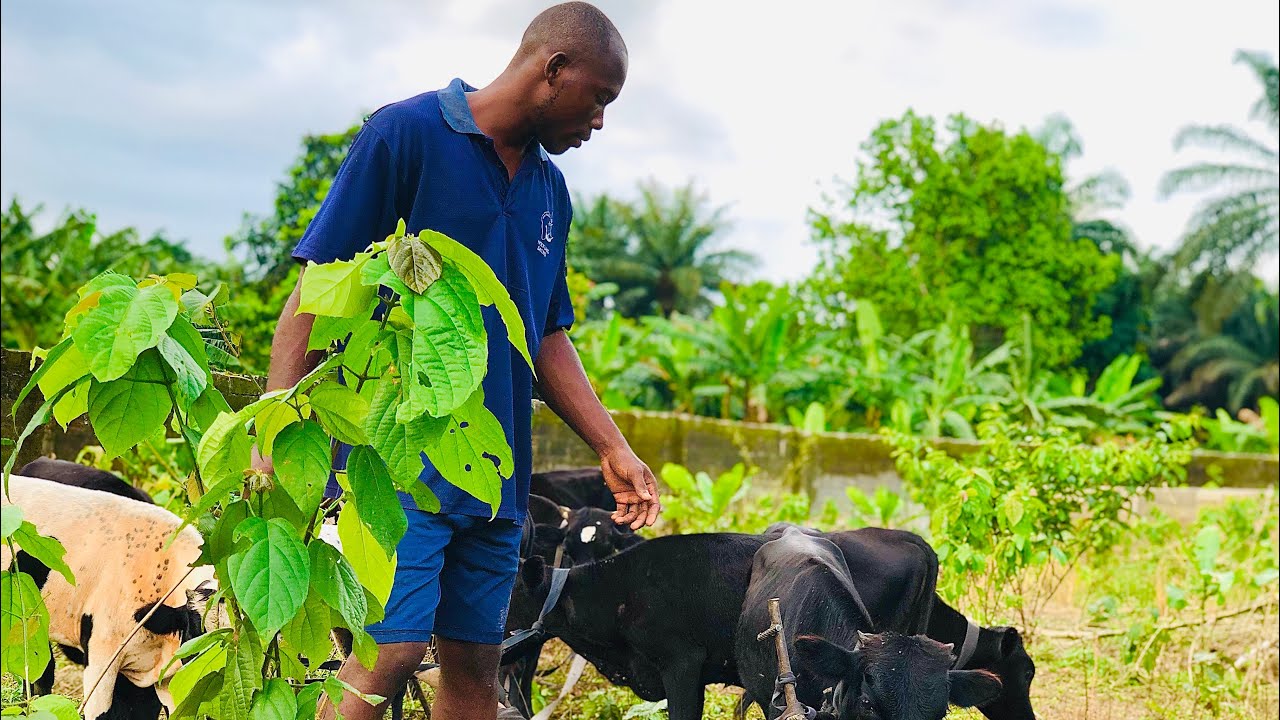Introduction
Starting a cattle farming business in Nigeria is a venture that holds substantial promise, given the country’s vast agricultural potential. Imagine you standing on the bustling streets of Sokoto State, and this golden opportunity crosses your mind—a business that’s not only profitable but also sustainable. Cattle farming is where you should cast your sights.
Firstly, understand the market demands. Nigeria’s population is growing, and so is the demand for beef and dairy products. This is where you come in. You may be tapping into a market that’s ripe and ready for expansion. But it’s not just about selling; it’s about producing quality. That means selecting the right breed of cattle that thrives in Nigeria’s climate.
Next, consider the land. You don’t need a ranch the size of Texas to start. A modest plot of fertile land may be enough, but it must have access to clean water and be free from pollutants. This is important for the health of your cattle and the quality of your product.
Now, talk about care. Cattle farming isn’t just a business; it’s a responsibility. These animals rely on you for their well-being. Regular veterinary check-ups, vaccinations, and proper feeding are non-negotiable. You need to be as committed to them as you are to the success of your business.
Lastly, think about the future. This isn’t a get-rich-quick scheme; it’s a long-term investment. With the right strategy, you can grow your herd and your profits. But it takes patience, dedication, and a willingness to learn and adapt.
So, are you ready to take on the challenge? Because cattle farming in Nigeria could just be the venture that transforms your entrepreneurial dreams into reality.
1. Craft Your Business Plan
Your business plan serves as the compass guiding you through the complexities of entrepreneurship.
Begin by defining your vision with clarity. Envision where you see your business in the future and articulate it succinctly. Next, set SMART objectives—specific, measurable, achievable, relevant, and time-bound goals that serve as benchmarks for progress.
Now, onto strategy. Detail the steps necessary to realize your vision and meet your objectives. Break down each component methodically, considering market analysis, product development, marketing tactics, and financial projections.
Remember, your business plan isn’t static; it’s a living document that evolves with your business. Regularly revisit and revise it as needed. With a meticulously crafted plan, you pave the way for your entrepreneurial journey with purpose and direction.
2. Raise the Capital
Embarking on cattle farming is like setting sail on a vast ocean of opportunity. It’s essential to have your financial ship’ in order, stocked with the necessary resources. Think of capital as the wind in your sails; without it, your journey hardly begins.
Your personal savings serve as the anchor, providing stability and showing your dedication. Loans are like the currents that can propel you forward, expanding your reach. And investors are your crew, each bringing their own strength and belief in your success.
So, what’s your plan? It’s about navigating the financial waters wisely and choosing the right combination of funding that best suits your business’s course. With every smart investment, you’re not just moving forward; you’re leading the way in this exciting endeavor.
3. Secure a Good Location
Location is key. You’re looking for a place with enough space for grazing and accessible water sources. Plus, consider the proximity to markets for selling your cattle or beef. Find suitable land for your cattle farm with ample grazing space and access to clean water sources. Set up sturdy fencing to keep your cattle safe, and invest in basic facilities like shelters and feeding troughs.
4. Choose Your Cattle Breed
When selecting a cattle breed for your farm, consider the local environment and your farming goals. In Nigeria, breeds such as the Sokoto Gudali and White Fulani are well-suited to the climate and known for their resilience and adaptability.
The Sokoto Gudali, for instance, is renowned for its beef production, boasting a sturdy frame and muscle development ideal for meat processing. On the other hand, the White Fulani, with its distinctive long horns and white coat, is often favored for dairy farming due to its high milk yield.
Your choice should also reflect your focus. If beef production is your aim, then a breed like the Sokoto Gudali is your best bet. If you are leaning towards dairy, the White Fulani offers the most benefits. And for a dual-purpose operation, there are breeds that can provide both substantial beef and satisfactory milk yields. Ultimately, the decision hinges on aligning the breed’s characteristics with your specific agricultural objectives to ensure a thriving and productive farm.
5. Build Your Farm Structure
Your cattle need a home, right? Construct pens, fences, and watering systems to keep them safe and comfortable.
Creating a suitable environment for your cattle is essential for their health and productivity. A well-designed farm structure should include sturdy pens that provide ample space for each animal to move, rest, and feed without stress. Fences are crucial for security, ensuring that cattle do not wander off and are protected from predators.
Water is the lifeblood of any farm, and a reliable watering system is non-negotiable. It should provide a constant supply of clean water to meet the cattle’s needs, which can vary depending on the weather and their life stage. Consideration for the climate and weather patterns is also important when designing shelter, as cattle need protection from extreme temperatures, whether it’s the scorching sun or torrential rains.
6. Get Essential Tools and Equipment
From feeding troughs to veterinary supplies, make sure you have all the tools you need to take care of your herd. Proper nutrition is essential for the health and productivity of your cattle. Invest in high-quality feed and supplements to meet the nutritional needs of your herd, especially during dry seasons or when grazing is limited.
Establish partnerships with reliable suppliers for feed, veterinary services, and other necessary resources. Additionally, establish connections with local markets or slaughterhouses to ensure a steady income stream for your cattle products.
7. Implement Disease Control Measure
Cattle farming comes with the risk of diseases, so it’s important to implement effective disease control measures. This includes regular vaccinations, proper hygiene practices, and routine health checks by a veterinarian.
Cattle aren’t just big pets; it require careful management. Regular feeding, vaccinations, and check-ups are part of the routine.
8. Obtain Necessary Permits and Licenses
Ensure that you have all the required permits and licenses to operate a cattle farm legally in Nigeria. This includes registration with relevant agricultural authorities and compliance with environmental regulations.
Remember, cattle farming in Nigeria is more than just rearing animals; it’s about tapping into a market with huge demand for beef and milk. It’s a business that can be quite profitable if managed well. And with these steps, you’re well on your way to becoming a cattle baron in Nigeria.
Recap
In summary, starting a cattle farming business in Nigeria offers tremendous opportunities for you. By conducting thorough research, securing suitable land, investing in quality cattle breeds, and establishing essential infrastructure, aspiring farmers can lay a strong foundation for success. Moreover, developing a comprehensive business plan that outlines goals, budgets, and marketing strategies is crucial for long-term sustainability.
Despite the challenges and complexities inherent in the industry, the potential rewards—both financial and personal—are significant. From meeting the local demand for beef and milk to contributing to food security and economic development, cattle farming holds promise for entrepreneurs and communities alike.


















